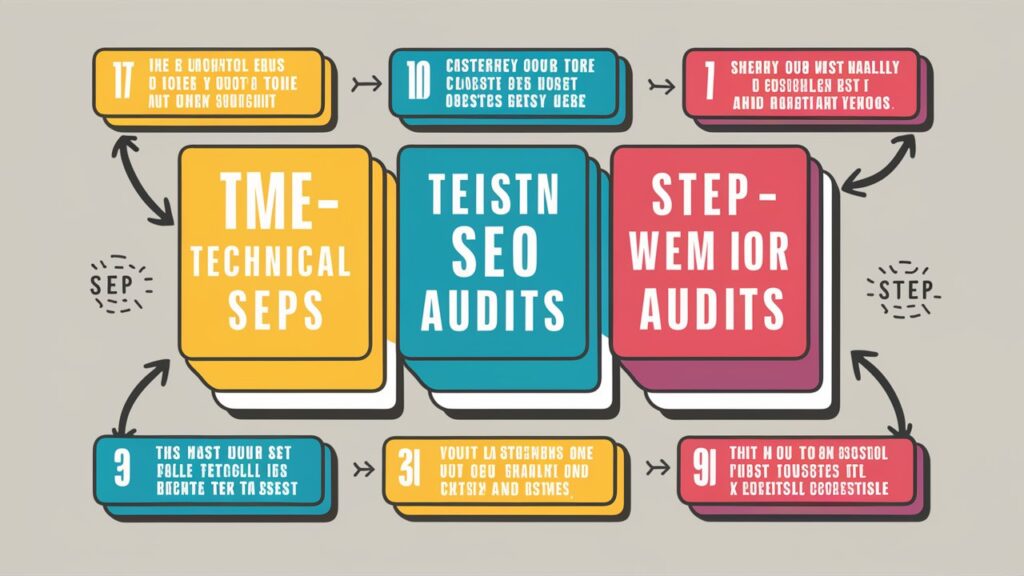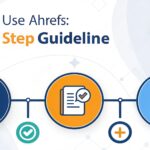
Search engine optimization, or Seo, is crucial if you want to see an increase in organic traffic to your website. Nonetheless, it might be difficult to stay on top of. The most recent Seo tactics due to frequent algorithm changes and changing recommended practices.
For this reason, it’s critical to perform technical Seo audits on a frequent basis. A technical Seo audit looks at a website’s underlying code and architecture to find. And address problems that affect its performance and visibility in search results.
A simplified audit can be completed by you in a few simple stages. Even though a full-scale audit can be complicated.
We’ll take you through a simple, do-it-yourself technical Seo assessment process in this post. By following this easy 5-step inspection approach, you’ll be able to identify common issues and quickly address them to keep your SEO foundations strong.
The Value Of A Technical SEO Assessment
The following five factors make carrying out a technical SEO audit crucial:
Imparts Search Engine Exposure
Search engines’ ability to crawl, index, and rank your website is directly impacted by technical SEO checklist items like mobile friendliness, page speed, and website structure.
Performing an extensive search engine optimization audit will boost your visibility and result in more organic traffic, better search engine ranks. and more exposure on search engine results pages (SERPs).
Enhances the User Experience
A pleasant user experience is also influenced by a number of technical SEO elements.
For instance, having mobile responsiveness, easy-to-navigate pages, and quick page loads all help to maintain users’ interest and satisfaction with your website.
By checking and improving these technical areas of your website, you improve user experience for your visitors as well as search engine understanding, which will increase conversions, decrease bounce rates, and raise retention rates.
Identifies and Fixes Issues
The technical SEO audit will help uncover a myriad of issues impacting your website’s performance like broken links duplicate pages, crawl error as well as server problems.
Regular audits let you remain active in maintaining your site’s overall health and resolve any emerging problems before they turn into important issues.
Maximizes Crawling and Indexing Efficiency
Search engine robots continually crawl and index websites in order to identify and rank websites in results of searches.
When you conduct a technical SEO audit, you will make sure that your website is optimized to ensure efficient indexing and crawling, allowing search engines to find and rank your site’s content correctly and efficiently.
Boosts Site Performance and Conversion Rates
Technical SEO has a direct impact on many aspects of site performance such as page loading speed, safety, as well as overall performance. A site that is optimized is more prominent in search results, but also offers a smoother, more secure user experience.
Through regular technical SEO reviews and implementing the required improvements, you will improve the performance of your website, its usability and, in the end the ability to turn visitors into potential customers, or even leads.
5 Simple Step Guide For Technical SEO Audit
1. Crawl Your Website
The process of crawling your site is the first process when you’re checking your site for SEO issues. It’s like directing an algorithmic robot to search every part of your website and then make lists of what require fixing.
This robot is also referred to as a crawler browses through each page of your site in how an engine like Google can.
This is how it is:
Choose a Crawler: First, you have to choose a program which can crawl for you. There’s a range of tools on the internet, some which are free, while others require payment.
These tools comprise Screaming Frog, SEMrush, Moz’s Website Crawl.
The Crawl is now in the Beginning After you’ve chosen your tool, you instruct it to begin crawling your site. It will then begin visiting every page on your website and following the hyperlinks from one page to the next and taking notes of what it discovers.
Gather Information While the browser explores your site it will collect information about what it sees including title, web addresses headings, hyperlinks, and images.
It also checks for problems, like missing links or sites that don’t load correctly.
Read the Report: After the crawler completes its work, it will give you a report of the results it came across. The report can help determine any issues that could hinder your website’s performance search engines.
Fix Issues: Once you know the issues that need fixing then you can begin working to improve your website.
This could be the result fixing broken hyperlinks, or changing descriptions and titles in addition to making other changes to improve the way your website is displayed on search engine results.
Maintain a close eye on: SEO is an ongoing process. It is crucial to watch your site for issues that may arise. If you keep up-to-date and keeping up-to-date it will make your website perform better in search engines and will also attract more visitors.
2. Check Site Speed
The speed of your website is a crucial step to making sure that your website is performing well for the users and search engines. Speed of your site refers to the speed at which your site is loading when someone attempts to access it.
Users could grow irritated and go from your website without viewing the content if it takes too long to load. Additionally, search engines such as Google favor websites that are fast loading and might place them higher in results for searches.
Here’s a quick breakdown of how you can check the speed of your website:
Utilize a Speed-Checking tool: There are tools that are available online, such as Google PageSpeed Insights or GTmetrix that can assist you in determining your website’s speed.
These are speedometers on your website and tell you what speed it is and how slow your site is.
Enter the address of your website: Once you have selected a tool, input the address of your site and press enter. The tool then connects to your site and determines the time it takes for it to load.
Examine the results: After the tool has finished analyzing your site and gives you an assessment of how speedy your site is, and also the areas that could use improvement to improve.
It could be as simple as compressing images, decreasing their size or altering the way certain areas of your site are designed to make them load quicker.
Make improvements: Once you know what the issues are and what the issues are, you can begin working on resolving them.
This could involve making modifications to the code of your website and optimizing images or making use of the the content delivery network (CDN) to help your site load quicker for users in various parts around the globe.
Test Another time: After you have implemented changes to increase the speed of your website it’s an excellent idea to check it over once more to check whether things have improved. You should ensure your site is as speedy as it can be to keep users and search engines satisfied.
3. Optimize Site Structure
Optimizing the structure of your website is about arranging your site in a manner that makes it simple for both your visitors as well as search engine crawlers to understand and navigate.
Like an organized book is structured with chapters, headings and the table of contents A well-organized website comes with clear categories, subcategories and a simple navigation menu.
Here’s how you can optimize the structure of your site:
Examine Your Current Design: Take a look at your website and take a look how it’s structured. Do you have a clear structure of categories and pages Do you feel it’s messy and chaotic? Do you feel there are too many clicks to get the information you need?
Understanding the structure of your current one can be the very first thing towards making changes.
Simplify Navigation: The navigation menu on your website serves as a guide for your visitors, guiding visitors to different areas of your website. Be sure that your navigation menu is simple to understand, including clearly defined subcategories and categories.
Avoid providing customers with an excessive number of options or intricate dropdown menus.
Construct a Logical Structure: Create a hierarchical structure for your material. There are general categories on top, and more specific subcategories below.
This assists users and search engines to understand the connection between various topics and pages on your website.
Utilize Internal Links: These are links that link from the one web page to another. They help visitors navigate your website but can also help spread authority and relevancy across your site.
Utilize internal links in a strategic way to connect pages that are similar and lead users to related information.
Improve URL Structure: Your URLs for your website should be clear and simple to read, using keywords that describe what the page’s content is.
Steer clear of long, complex URLs that are teeming with numbers and symbols. Instead, pick succinct URLs that accurately convey the page’s content.
HTML Sitemap: You should think about making an HTML sitemap that is one webpage that contains all of the pages of your website. It is a great tool for both users and the search engine to browse your website and locate the content.
4. Mobile-Friendliness
Mobile-friendliness refers the extent to which your website functions and appears on mobile devices, such as tablets and smartphones. With a growing number of people using smartphones to browse the web your site must be simple to use and navigate on smaller screens.
It’s not only about user convenience but also a major element in the way search engines such as Google determine the rank of your site in the search results.
Here’s how you can check and improve mobile-friendliness
Make use of a Mobile-Friendly Test Instrument: There are tools that are readily available, such as Page Speed Insights and MobiReady which can look at your website and determine whether your site is optimised for use on mobile phones.
Simply enter your website’s URL it will demonstrate the way it appears across different mobile devices, and identify any issues that require correction.
Responsive Design Make sure that the website you’re using is constructed with methods of design that are responsive.
This guarantees users have a consistent experiences across devices.
read-friendly text and tap targets Check that the your website’s text is simple for users to understand without having to zoom in, and that the links and buttons are big enough to be tapped with your finger.
Small fonts and small-sized links can be a problem for mobile users and can result in excessive bounce rates.
Speedy loading times: Mobile users are often traveling and are not tolerant of slow loading websites. Optimize the performance of your site by reducing unnecessary code, compressing images and employing caching techniques to ensure speedy loading times on mobile devices.
Optimize Videos and Images: Large images and videos can cause slowdowns on your website for mobile phones. Utilize optimized videos and images which are appropriate for mobile screens to speed up the loading time without jeopardizing quality.
Evaluation of User Experience Use a smartphone or tablet to browse your site using tablets or smartphones. Be aware of how it is simple to locate details, fill out forms, and complete the tasks.
Make sure you address any usability issues in order to make sure that you have a pleasant. Smooth experience for mobile users.
5. Fix Technical Issues
Resolving problems with technical aspects is last important step of a tech SEO audit. After you’ve discovered any issues with your website’s design, structure or compatibility, you must tackle them.
The resolution of these issues will improve the visibility of your website as well as user experience and overall performance in the search results.
Here’s how to handle this task:
Prioritize fixes: Start by addressing the most pressing issues that be the most detrimental to your site’s SEO as well as user experience.
This could include the repair of broken links fixing server issues. Optimizing the speed of your website, and ensuring accessibility for mobile devices. Prioritizing fixes allows you to focus on the most urgent problems first.
Repair Broken Links: Broken links can be a source of frustration for users. Also signal the search engine that your website could be in poor condition or not properly maintained. Make use of a tool that can identify the broken link and repair it on your site.
Enhance page speed: Slow-loading pages can cause users to leave and negatively affect your indexing on search engines.
Increase the speed of your website by optimizing images as well as reducing the time it takes to respond from servers and decreasing CSS or JavaScript files. Implement caching strategies to help websites load more quickly for visitors who retur
What is (SEO) – Search Engine Optimization?
Improve Meta Tags Meta tags, which include meta descriptions. title tags are essential to how your site’s pages are displayed in search results.
Check that every page is equipped with distinct meta tags that are descriptive and accurately reflect the contents that the site. Optimize meta tags by using relevant keywords to increase your website’s visibility in results from searches.
Use Structured Data Markup: The structured markup assists search engines to understand contents of web pages more effectively and may result in rich snippets of content in search results.
Use structured data markup using tools such as Schema. org to give more information to search engines and improve your website’s visibility.
Monitor and maintain: Once you have solved technical issues, you should keep an eye on your site for any new problems. SEO is a continual process and being vigilant in maintaining your website’s performance and health is crucial to ensure long-term success.
The Wrap-Up
It is important to regularly go through these SEO auditing steps will help identify problems. that could be causing issues before they spiral beyond control and lower rankings. When issues are fixed continue to document your the results and tests in an Excel spreadsheet to monitor the progress.
Increasing the speed, crawlability, and quality of content by conducting regular technical SEO. checks prepares websites for success in search results by ensuring. The infrastructure supports content and does not limiting it.
Use this simple method for performing regular health check-ups. By following the steps step by step, you can to identify. Remove roadblocks to optimization as part of an ongoing SEO base.

I have been in the SEO industry for more than 9 years, with skills and attitude that are geared towards improving the online presence of your website on search engines such as Google and Bing. Currently, I am Margaret Dalton digital working as a Lead Analyst in a Fortune 50 company, and at the same time, I was working as a successful SEO Freelancer to help websites of any sizes to get on top of the search engines.





